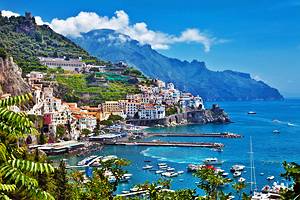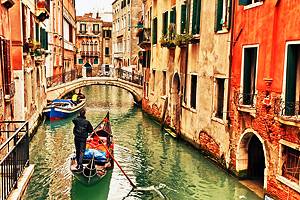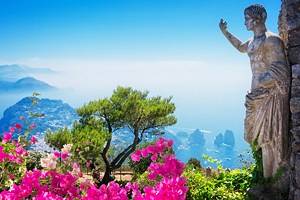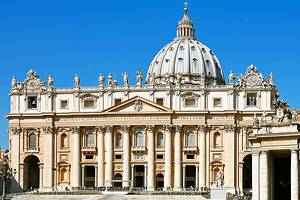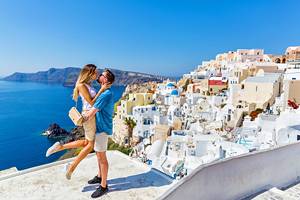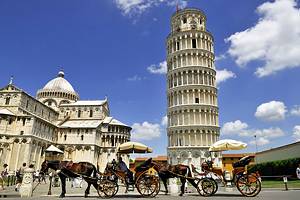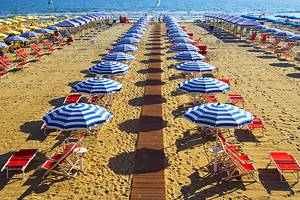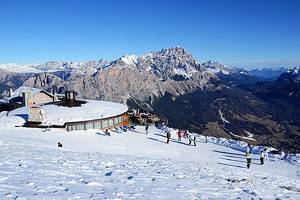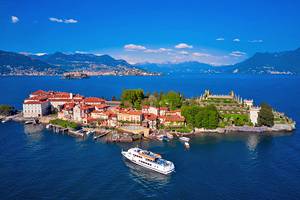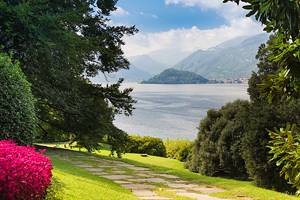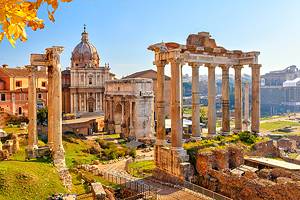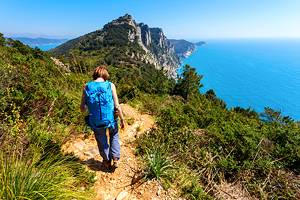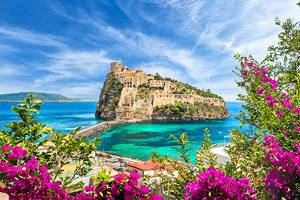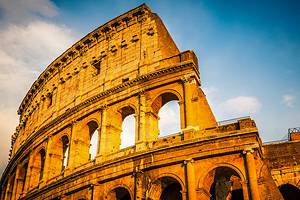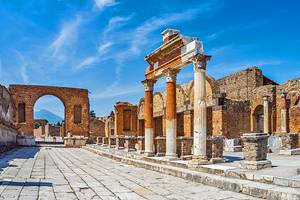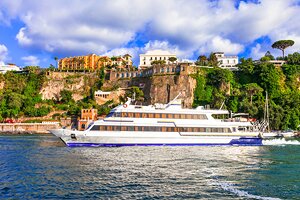Lakes in Europe
Glacial waters, Alpine lagoons, and stunning nature all around – Europe's lakes offer a wide variety of activities and attractions no matter where you're heading or what you're looking for.
Europe's lakes make ideal summer destinations for those who want a place to relax and cool down without having to head down to crammed beach destinations. But lakes also offer plenty of opportunities to stay active, take on the trails, and even do some cross-country skiing on the shores if you visit during the off season.
No matter what your vacation goals might be, plan a memorable trip with our list of the best lakes in Europe.
Lake Como, Italy
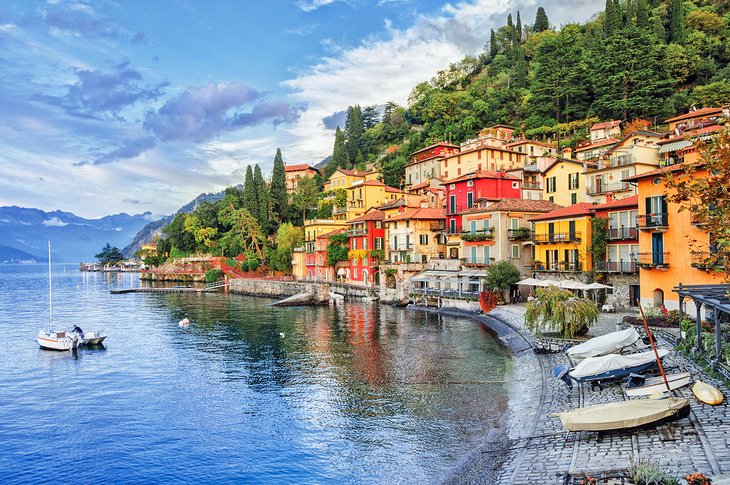
Lake Como is one of Europe's deepest lakes. With a depth of over 400 meters, it sits at position number five – the top four are all in Norway. The lake has attracted wealthy merchants, royalty, and visitors since Roman times. Today, its shores are home to many Hollywood and international stars, as well as picturesque villages and world-renowned spas.
One of Italy's most popular lakes, Como is a haven for water sports lovers, who can try water skiing, wakeboarding, sailing, windsurfing, and even diving. On the shores, a background of green mountains awaits hikers and explorers – and because of Lake Como's relatively warm winters, they can be hiked and explored all yearlong.
While the northern parts of the lake have the best beaches, patches of golden sand can be found all around Lake Como. Most are fully equipped with umbrellas and sun loungers, and some also offer restaurants right on the beach, as well as canoe rental places.
Just outside the town's majestic villas and many cafés, there are also many farms (most of which are open to visitors) producing everything from olive oil to honey to cheese.
Lake Geneva, Switzerland
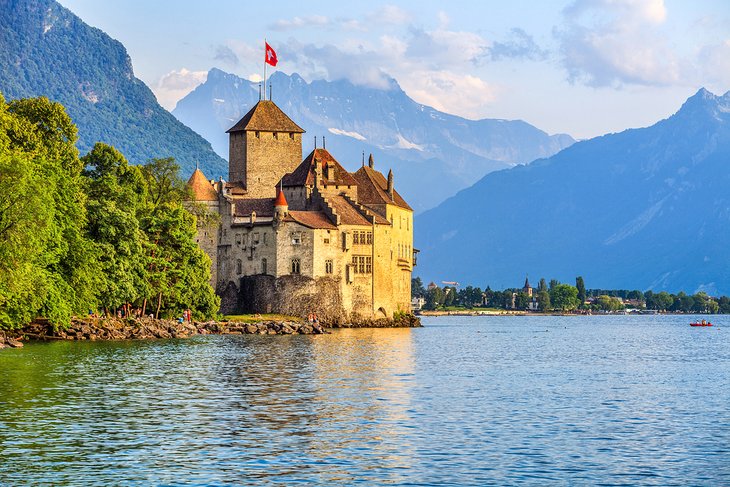
Crescent-shaped Lake Geneva sits on the Alps, right on the border between France and Switzerland. As the largest body of water in Switzerland, Lake Geneva attracts visitors all yearlong. They come here for everything from boating to walking the steep cobblestone streets to antique shopping.
One of the most stunning areas of the lake is the western shore, which sits against the snowy peaks of Mont Blanc.
Lake Geneva itself is an impressive 310 meters deep, which makes it possible for large historic paddle steamers to ply the waters here, connecting villages along the way. There are 116 beaches on the shores of Lake Geneva, most of which are public and free to access.
Despite its location against the snowcapped Alps, the waters of the lake are warm enough between June and September for swimming and water sports.
- Read More: Tourist Attractions in Geneva
Lake Bled, Slovenia
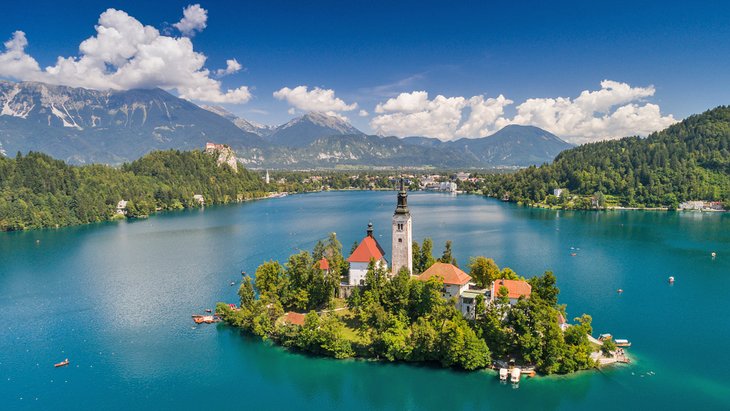
The bluish-green waters of Lake Bled are just one of its many attractions. Located in the Julian Alps in northwestern Slovenia, the lake is perhaps best known for the tiny island in the center of it.
Here, the medieval Bled Castle and its 16th-century bell tower over a cliff, offering magical views of the quiet waters around. The castle can be reached on a traditional gondola-like "pletna" boat during warmer months; in winter, though, the lake is often frozen.
Tourists come to Lake Bled for the many hiking, biking, and water-sports opportunities, though the background of thick forests and snow-covered peaks doesn't hurt either. A mostly paved, easy six-kilometer-long path circles the lake, but those looking for more advanced hiking can head to Triglav National Park, which can be accessed directly from the lakeshore.
The area around the lake has been considered a prime health resort destination since the early 20th century. Today, the northeastern part of the lake still offers access to thermal springs, and visitors can stay at a historical hotel on the shores to try wellness treatments or enjoy the private beach.
Lake Hallstatt (Hallstättersee), Austria
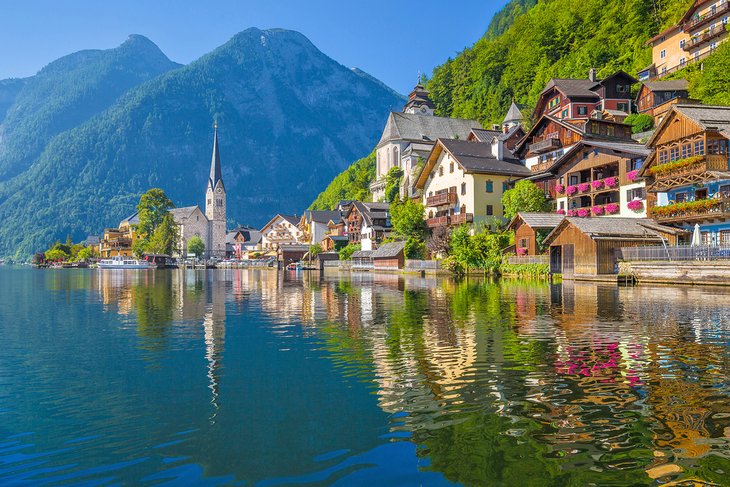
Dating back to the Ice Age, Lake Hallstatt is one of the most striking water landscapes in Austria. The lake is named after the tiny, picturesque Alpine village it sits against.
With a depth of 125 meters, clear waters, and a rich ecosystem, the lake is a prime destination for scuba divers. Rowing and pedal boats are also available for rent, and those with a passion for hiking can head to the steep slopes of the Dachstein karst mountains around.
Lake Hallstatt attracts over a million visitors a year, and the months of July and August can be crowded, both in the water and on the small beaches, such as Obertraun, that line up the shores.
For a completely different experience, consider visiting Hallstatt in winter – the little Alpine village of just 800 residents turns into a winter wonderland when covered with snow.
Lake Lucerne, Switzerland
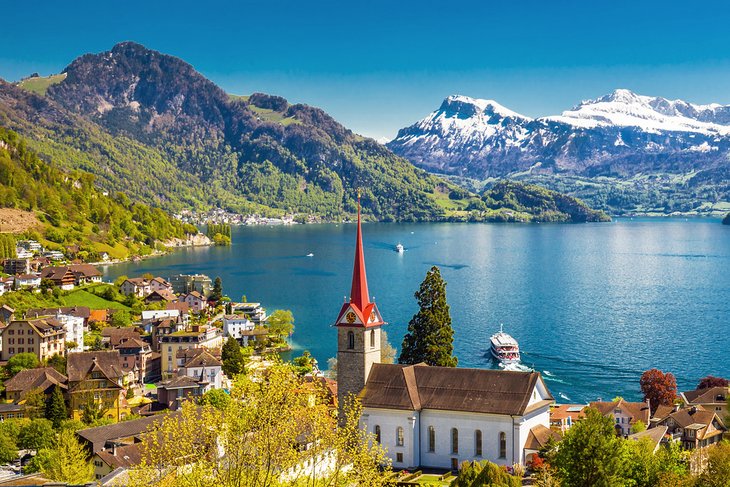
Also known as the Lake of the Four Cantons, Lake Lucerne is Switzerland's most scenic lake. Cruising Lake Lucerne on historic paddle steamers is perhaps the best way to appreciate the beauty of the snow-covered winter landscape.
Visitors can also try the cycling and skating paths along the shore, go antique shopping in Lucerne town, and take advantage of the many musical and culinary events that take place around the lake during the warmer months.
The lake itself covers 114 square kilometers and is surrounded by steep peaks. Some of Switzerland's oldest communities sit around the lake.
- Read More: Tourist Attractions in Lucerne
Plitvice Lakes, Croatia
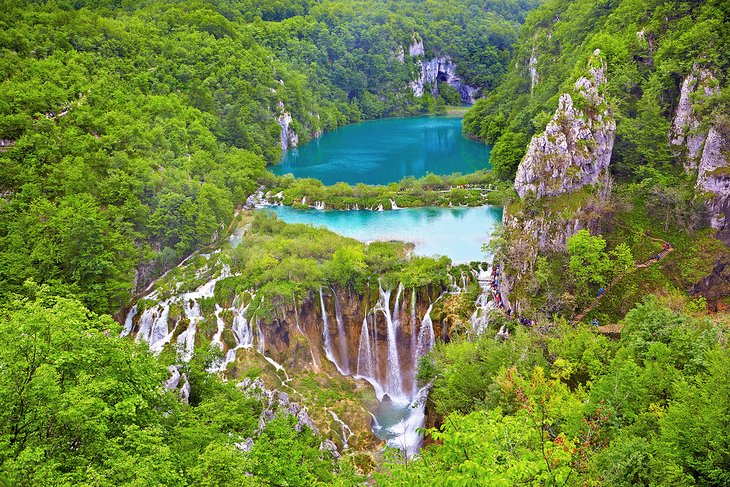
If one lake isn't enough, don't worry – Plitvice National park consists of sixteen lakes interconnected by a series of waterfalls. Natural dams rich in moss and algae separate the lakes and mix with runoff from the mountains to create a variety of water colors – from azure to green to a silvery gray or blue. As the sunlight hits the water at different angles throughout the day, the lakes change colors.
With an area of almost 300 square kilometers and seven different routes to tour the park, Plitvice offers exceptional natural beauty just begging to be explored. The park is heavily forested, with trails wandering through the trees, over wooden bridges, and towards caves and steep slopes.
Rowing is allowed on the largest lake, Kozjak, and visitors can also try winter walking, as the park is open all yearlong and gets covered in a blanket of snow in winter.
Read More: Tourist Attractions in Croatia
Lake Annecy, France
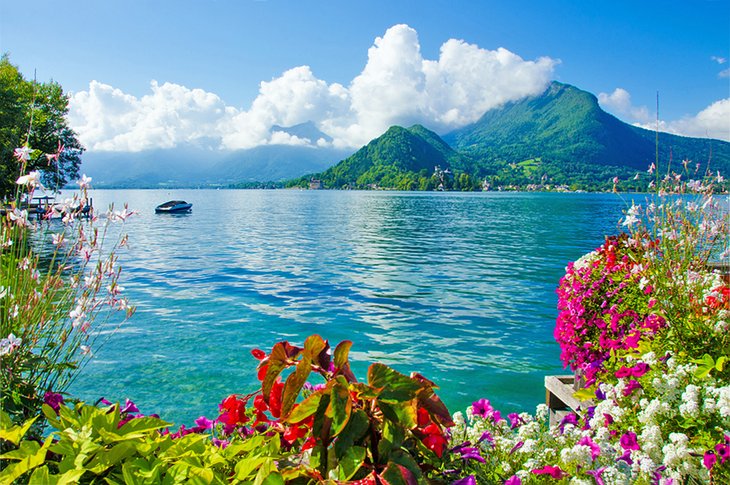
Nestled in the heart of the French Alps, the third largest lake in France has earned a reputation as one of the cleanest lakes in Europe. With a depth of just 82 meters, Lake Annecy is shallow compared to other European lakes, but it makes up for it with its breathtaking, clear blue waters, perfect for swimming.
One of the most beautiful lakes in France, Lake Annecy is surrounded by snowcapped mountains and plenty of sandy beaches. It's a stunning contrast of colors and textures that continues as you explore the many lakeside medieval villages.
In winter, Lake Annecy transforms into a winter fairy tale, with surrounding valleys and mountains perfect for cross-country skiing, snowshoeing, and even paragliding on sunnier days.
- Read More: Things to Do in Annecy
Lake Garda, Italy

Italy's largest lake sits on the edge of the Dolomites, a perfect location for outdoor enthusiasts looking to hike, cycle, or just explore. The town of Sirmione is one of the most popular destinations around Lake Garda, where the 13th-century Scaligero Castle and a few medieval churches are the main attraction. From here, visitors can take ferries to other towns such as Riva, popular with sailing aficionados.
Lake Garda is also home to several islands, including the famous Isola del Garda. Once used as a Roman burial ground, it's now home to a Venezian neo-Gothic villa surrounded by formal manicured gardens.
The area around the lake has a mild climate that makes it a perfect place to visit at any time of the year. It's also one of the reasons that Lake Garda, with its clean, blue waters, is such a popular destination for swimming and enjoying the well-outfitted beaches, and it's highly sought-after by kayakers and windsurfers.
Lakes of Killarney, Ireland
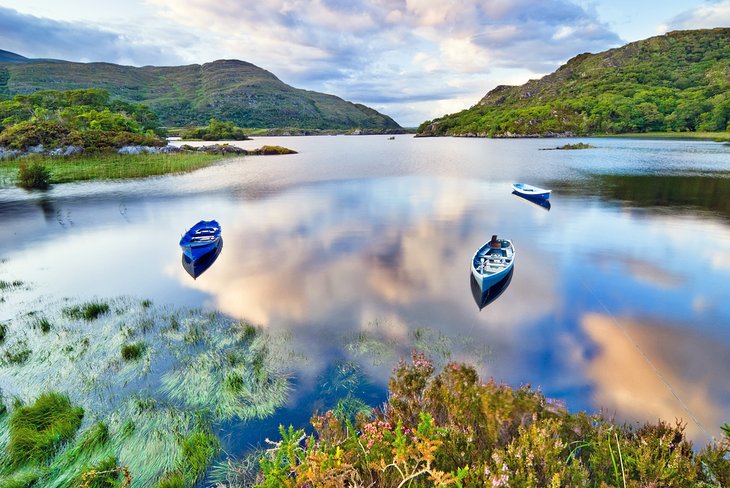
The three lakes – Lough Leane, Muckross Lake, and Upper Lake – in Killarney National Park are surrounded by the sandstone MacGillycuddy's Reeks, Ireland's tallest mountain range.
Muckross Lake is Ireland's deepest lake at 75 meters, but because the lakes sit deep inside a valley, they're just 20 meters above sea level. Muckross is a favorite destination for hiking, as it's surrounded by a 10-kilometer hiking trail.
Lough Leane, the bigger of the three lakes, is home to many islands – some tiny and covered in lush forest, some home to ruins of abbeys and Copper Age archeological sites. Right on the shore, medieval Ross Castle is not only a great place to visit but also the perfect place to rent a boat, so you can discover the surroundings on your own.
On summer evenings, you can also join a guided kayak tour as the sun sets over the peaceful waters.
One of the best ways to admire the true beauty of the lakes, however, is to drive away from them. Almost 19 kilometers away from the lakes is Ladies View, a scenic viewpoint and one of the most famous photo spots in Ireland.
- Read More: Tourist Attractions in Killarney
Hornindalsvatnet, Norway
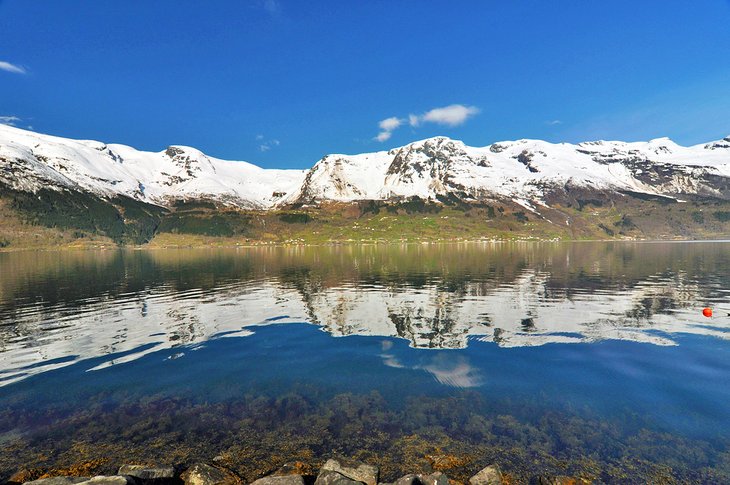
Europe's deepest lake sits in Norway's fjords, surrounded by mountains and glaciers and near one of Scandinavia's most scenic tourist highways.
At 514 meters deep, Hornindalsvatnet is not only the deepest lake in Europe but also the only one in the continent deeper than 500 meters. It ranks 12th in the world by depth. When an ROV (remotely operated underwater vehicle) was sent to explore the deepest point of the lake in 2006, it discovered a new fish species.
Hornindalsvatnet is unique because the bottom of the lake is salty, but the top is freshwater. This is caused by saltwater coming in from the fjords and then settling down at the bottom of the lake, while melted snow flows at the top.
The water is so clear, it is possible to canoe or swim here during the warmer months and see deep into the lake. During the winter, the lake ices over and provides a stunning spectacle of swirling lights.
To protect the natural landscape, the lake and its shorelines have remained mostly undeveloped except for a couple of ferry piers. Numerous hiking and cycling trails zigzag around the Iron Age burial mounds, history museums, and riding stables in nearby villages.
Read More: Tourist Attractions in Norway
Riffelsee Lake, Switzerland
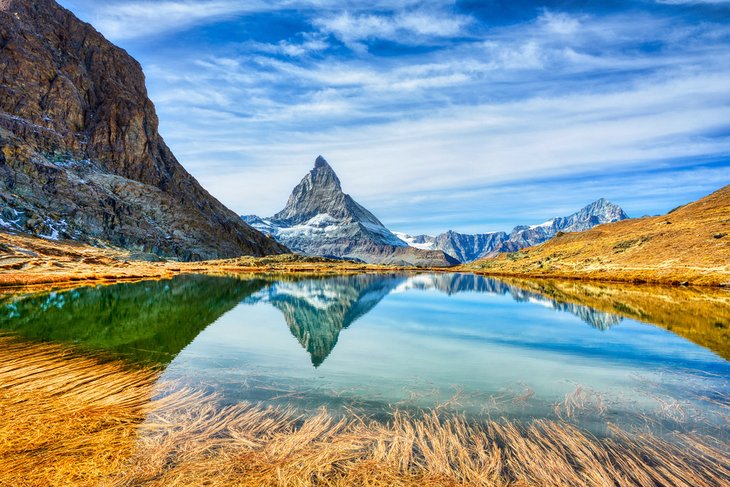
There are plenty of good reasons to visit Zermatt – Switzerland's mountain resort, famous for its skiing and climbing – and you can add Riffelsee lake to that list, as the lake is located above the town of Zermatt. If nothing else, it's worth a visit to get a picture of the majestic Matterhorn mountain's inverted mirror image reflecting on the lake.
While the lake itself has a surface area of just 0.45 hectares, it makes up for it with astonishing beauty. In addition to stunning photo opportunities – especially at sunrise, when the lake becomes a swirl of pinks and violets – Riffelsee lake is also surrounded by hiking trails (and snowshoe trails in winter), as well as a popular climbing route to the top of Riffelhorn mountain.
Saimaa Lake, Finland
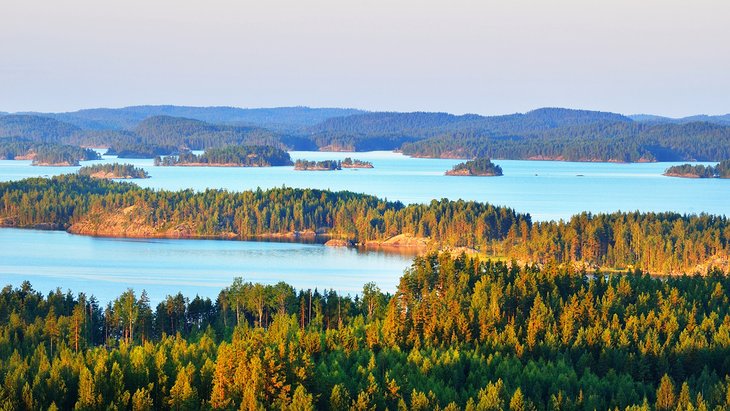
The fourth-largest natural freshwater lake in Europe, Saimaa covers an impressive 4,400 square kilometers in the south of the country. Saimaa is unique, as it's divided by canals and filled with small islands, which resulted in almost 15,000 kilometers of shoreline, the world's longest lake coastline.
The lake is home to the Saimaa ringed seal, the most endangered seal in the world with only about 400 left.
Surrounded by virgin forests and home to wolves and elk, the lake is one of Finland's most beautiful natural spaces. Holiday cottages are popular here, and visitors can take on the trails, visit some of the charming towns in the Saimaa area, or go hunting for the northern lights.
Read More: Attractions & Places to Visit in Finland
Lake Lugano, Switzerland, Italy
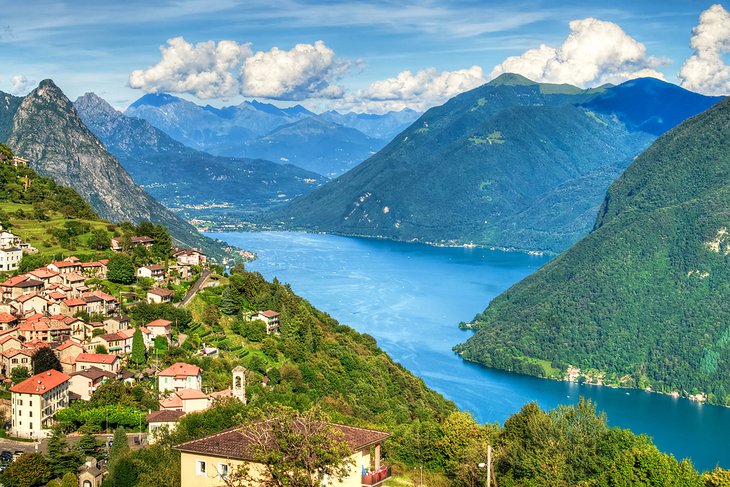
Lake Lugano sits right on the border between Switzerland and northern Italy, though about 63 percent of the 49 square kilometers lake is in Switzerland and 37 percent is on the Italian side.
The lake itself is surrounded by picturesque towns and villages, including the Swiss town of Lugano, home to 17 sites designated as heritage sites of national significance. Passenger boats on the lake connect town on both sides of the border and offer the perfect opportunity for postcard-perfect views.
The deep blue lake is also surrounded by a number of mountains. You can reach the top of Monte Generoso, the tallest mountain by the lake, with a rack railway that leaves from the town of Capolago. For great hikes, other mountains and plateaus can be reached via funicular railways and a cable car.
Read More: Tourist Attractions in Lugano, Locarno & the Ticino Region
Jökulsárlón Ice Lake, Iceland
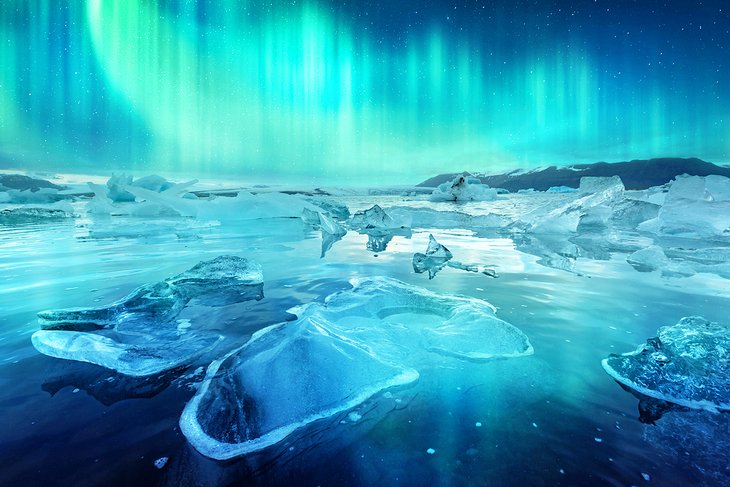
The Jökulsárlón ice lake sits at the edge of the Breiðamerkurjökull glacier. The lake is now 18 square kilometers in size, four times larger than it was in the 1970s because of the glacier melting. It is also the deepest lake in Finland at 284 meters.
Visitors can kayak the icy waters, tour the local ice caves, or take on the hiking trails around the lake. But the main activity here is photography, as the iceberg pieces floating on the lake offer unique hues of blues and volcanic black against the pink sunset sky. The location is also a great place to see seals.
Nearby Breiðamerkursandur beach, also known as Diamond Beach, sits right next to the lagoon, and it's a stunning sight, as pieces of ice wash out on the beach and mimic the look of tiny diamonds scattered on the sand.
Read More: Tourist Attractions in Iceland


